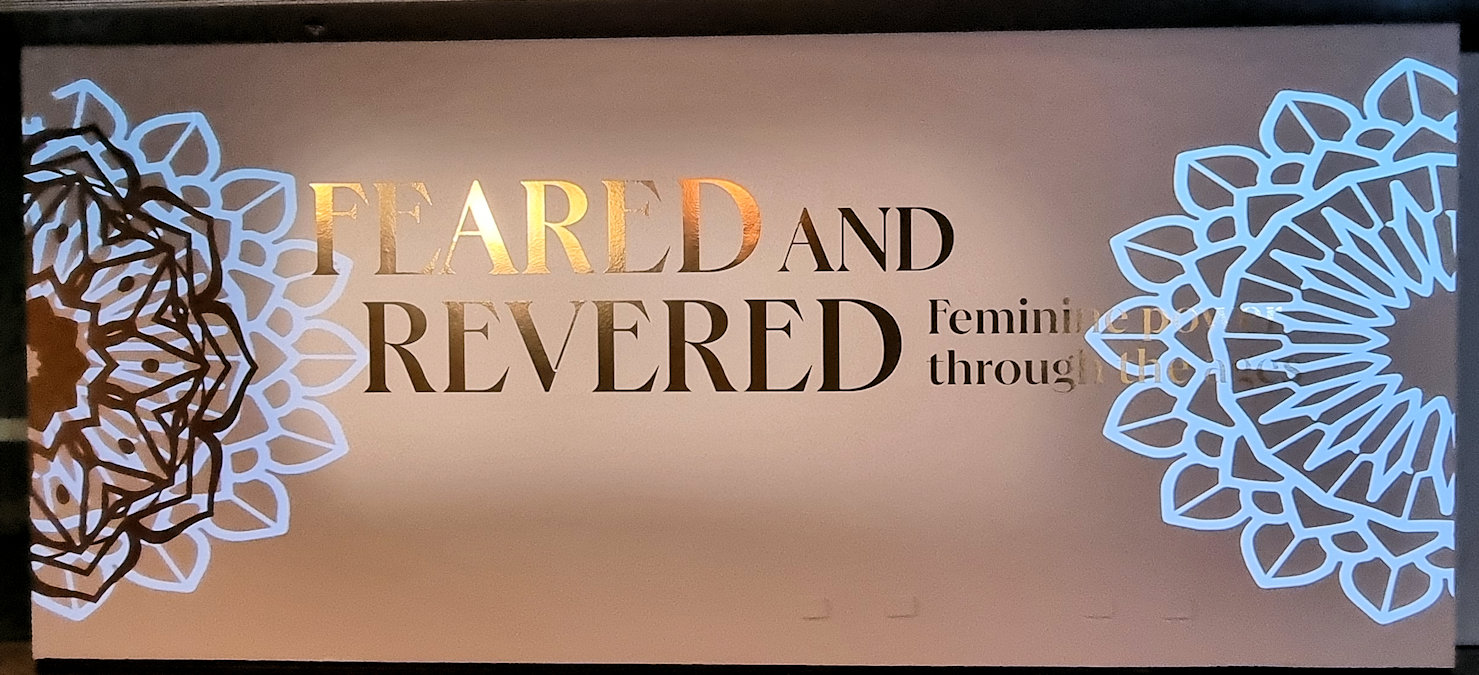Feared and Revered
Celebrating female power through the ages, Feared and Revered examines the diversity of spiritual females from cultures across the globe. Located at the National Museum of Australia in Canberra, until 27 August 2023, the exhibition has over 160 objects from the British Museum. There is also a section on Australian Indigenous female ancestral figures.
What’s on Display
With artifacts from six continents covering 5,000 years, the variety of items on display is impressive. If you like ancient history or archaeology, you will love this exhibition, because of its diversity. Not only does it cover the usual Egyptian and Greek periods, but includes China, India, South America and the Pacific.
We found the statues from the Middle East were great, with Ishtar, Sekhmet and Isis all represented. Greek and Roman culture was covered by Amphorae decorated with Persephone and statues of Hecate, Athena and Demeter. Medusa was also present in a small carving.
The statues from India and Mexico were ones we had not seen before, along with the masks from the far east and South America.
If you are in Canberra before August 2023 this is a great exhibition. We were very pleased that we went along.
Our photos are available for purchase on
For other great stories from Australia, please use the main menu above, or click on this link






















Leave a Reply